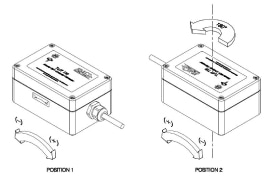As you conduct your quest to find your ideal tiltmeter, you have to keep in mind that each series has a varying tilt bias. To clarify, the bias is the difference between the true angle and the angle reported by the tiltmeter. For example, if you place a tilt sensor on a perfectly level surface, your reading would be something slightly different from a perfect 0°. This is due to mechanical tolerances within the sensor such as base plate, screws, standoffs, and other things. Not to worry, the following are four things you need to know to measure and remove this bias.
- Place the tilt sensor on an approximately horizontal surface (tabletop, granite flat, etc.). Read the indicated angle, theta1. For voltage output tiltmeters, theta1 = V x S, where V is the voltage and S is the scale factor reported in the user’s manual.
- Rotate the tiltmeter 180° on the surface so that it is facing the opposite direction. Read the indicated angle theta2.
- B = (theta1 + theta2)/2. Record B and subtract it from all subsequent measurements to get the true angle.
- For biaxial tiltmeters, biases for both tilt axes, Bx and By, should be measured.

